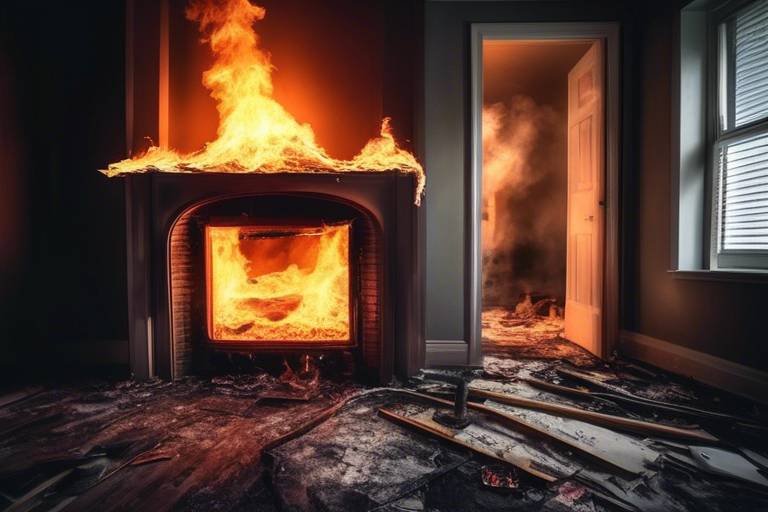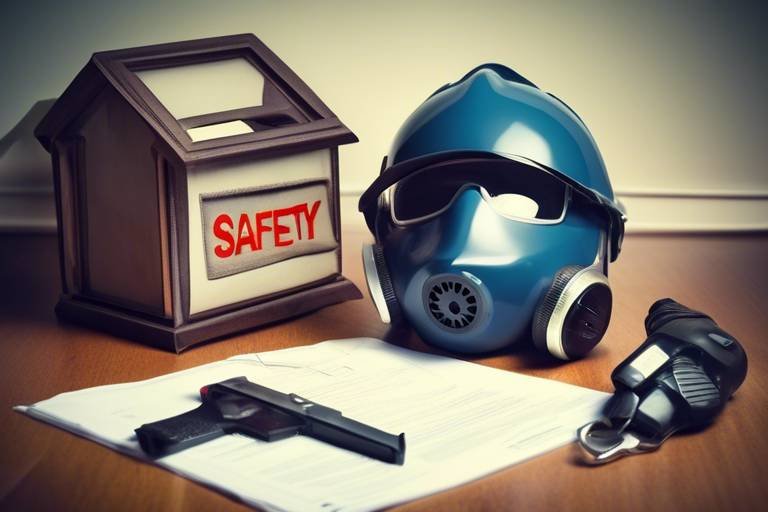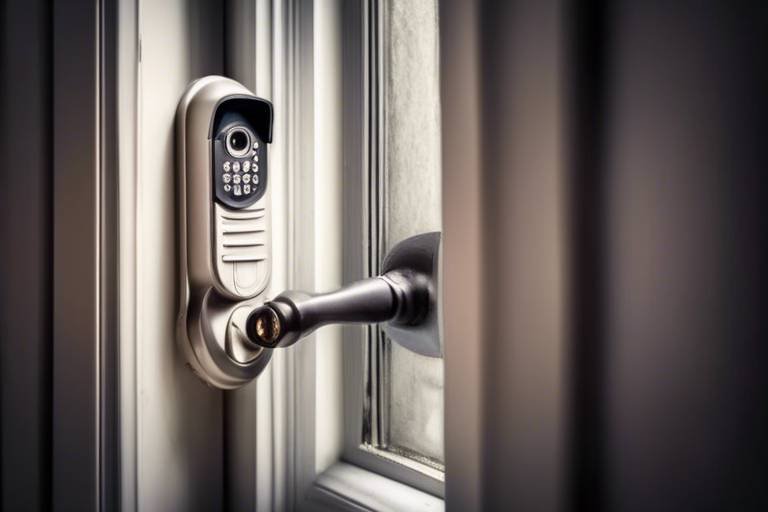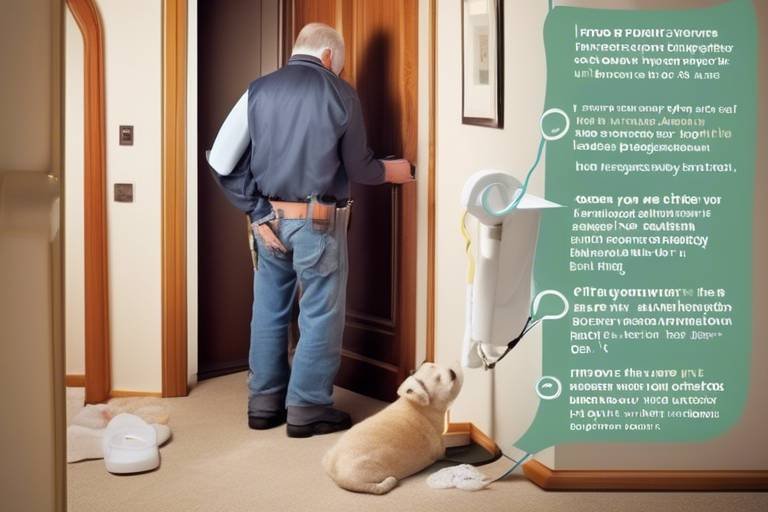Things You Should Know About Home Fire Safety
When it comes to protecting your home and loved ones, understanding home fire safety is absolutely essential. Every year, thousands of families face the devastating effects of house fires, which can lead to serious injuries or even loss of life. But here's the good news: many of these fires are preventable! By being informed and taking the right precautions, you can significantly reduce the risk of a fire occurring in your home. In this article, we will explore various aspects of fire safety, including common fire hazards, prevention strategies, the importance of smoke alarms, and how to create an effective fire escape plan. So, let's dive into the world of fire safety and arm ourselves with the knowledge that could save lives!
Before we can effectively prevent fires, we need to understand what causes them. Household fires often stem from everyday activities and common items found in our homes. For instance, did you know that cooking is one of the leading causes of home fires? In fact, unattended cooking is a significant contributor to kitchen fires. Other common fire hazards include:
- Faulty wiring and electrical malfunctions
- Heating equipment, such as space heaters
- Flammable materials stored improperly
- Candles left unattended
By identifying these risks, homeowners can take proactive steps to mitigate them. Simple actions like regularly checking your electrical systems, keeping flammable items away from heat sources, and ensuring that cooking areas are monitored can make a world of difference.
Implementing effective fire prevention strategies is key to safeguarding your home. Here are some practical tips that can help you keep your living space safe:
- Always stay in the kitchen while cooking.
- Use appliances according to the manufacturer’s instructions.
- Regularly inspect and maintain electrical systems.
- Store flammable materials, like cleaning supplies, safely.
By adopting these habits, you can greatly reduce the risk of a fire breaking out in your home. Remember, prevention is always better than cure!
The kitchen is often referred to as the heart of the home, but it can also be a hotbed for fire hazards. To keep this area safe, consider the following:
One of the most important rules in the kitchen is to never leave cooking unattended. This simple act can prevent a small flame from turning into a raging fire. Additionally, always keep a fire extinguisher nearby and know how to use it. It's also wise to keep a lid handy to cover pots in case of a flare-up.
Flammable materials, such as paper towels, dishcloths, and cooking oils, should be stored safely away from heat sources. A clutter-free kitchen can significantly reduce fire risks. Consider using cabinets or drawers to store these items rather than leaving them on countertops.
Electrical issues are a leading cause of home fires, so it’s crucial to maintain your electrical systems. If you notice flickering lights, outlets that are warm to the touch, or frequently blown fuses, these could be signs of a serious problem. It’s best to consult a professional electrician to address these issues promptly.
Smoke alarms are your first line of defense against fire. They provide early warning, giving you precious extra minutes to escape. It's vital to have smoke alarms installed on every level of your home, especially near sleeping areas. Regular testing and maintenance can ensure they function correctly when needed most.
There are various types of smoke alarms available, including ionization and photoelectric alarms. Each has its strengths, and understanding these can help you make an informed choice. For instance, ionization alarms are better at detecting fast-flaming fires, while photoelectric alarms are more effective for smoldering fires.
To keep your smoke alarms in top shape, test them monthly and replace the batteries at least once a year. Remember, smoke alarms don’t last forever; they should be replaced every 10 years. Keeping them well-maintained can be a life-saving habit.
Having a fire escape plan is crucial for ensuring everyone's safety in case of a fire. Sit down with your family and discuss the best escape routes from each room. Make sure everyone knows where to meet outside after exiting the home. Practicing this plan regularly can help everyone stay calm and act quickly during an emergency.
Identify the fastest and safest escape routes in your home. Ensure that these paths are clear of obstacles and easy to navigate even in low visibility. You can even create a simple map of your home to illustrate these routes for younger family members.
Regular fire drills can help familiarize everyone with the escape plan. Conducting these drills not only builds confidence but also ensures that everyone knows what to do when the alarm sounds. Make it a fun family activity to reinforce the importance of fire safety!
Fire extinguishers can be lifesavers when it comes to controlling small fires. It’s essential to have the right type of extinguisher for your home and know how to use it effectively. Keep extinguishers in easily accessible locations, especially in the kitchen and near heating equipment.
Understanding the different types of fire extinguishers can be crucial. Here’s a quick overview:
| Type | Use |
|---|---|
| A | Ordinary combustibles (wood, paper) |
| B | Flammable liquids (oil, gasoline) |
| C | Electrical fires |
Knowing how to use a fire extinguisher can be crucial in an emergency. Remember the acronym PASS:
- Pull the pin.
- Aim low at the base of the fire.
- Squeeze the handle.
- Sweep side to side.
Practicing this technique can prepare you for a real-life situation.
Having a list of emergency contacts readily available can facilitate a prompt response during a fire. This includes local fire department numbers, family contacts, and any other relevant resources. Keep this list in a visible location and ensure everyone in the household knows where to find it.
Familiarize yourself with your local fire department's contact information. Knowing who to call in case of a fire emergency can save precious time. Don’t hesitate to reach out to them for questions about fire safety or to schedule a home safety inspection.
Many communities offer fire safety resources and programs. These can include free smoke alarm installations, fire safety education, and community workshops. Take advantage of these resources to enhance your fire safety awareness and education.
Q: How often should I test my smoke alarms?
A: You should test your smoke alarms at least once a month.
Q: What should I do if my smoke alarm goes off?
A: Evacuate the building immediately and call the fire department from a safe location.
Q: How can I create a fire escape plan?
A: Identify all possible exits in your home, designate a meeting point outside, and practice the escape plan regularly with your family.
Q: Where should I place fire extinguishers?
A: Fire extinguishers should be placed in easily accessible locations, especially in the kitchen and near heating sources.
By being proactive and informed about home fire safety, you can create a safer environment for yourself and your loved ones. Remember, knowledge is power, and in this case, it could also be a lifesaver!
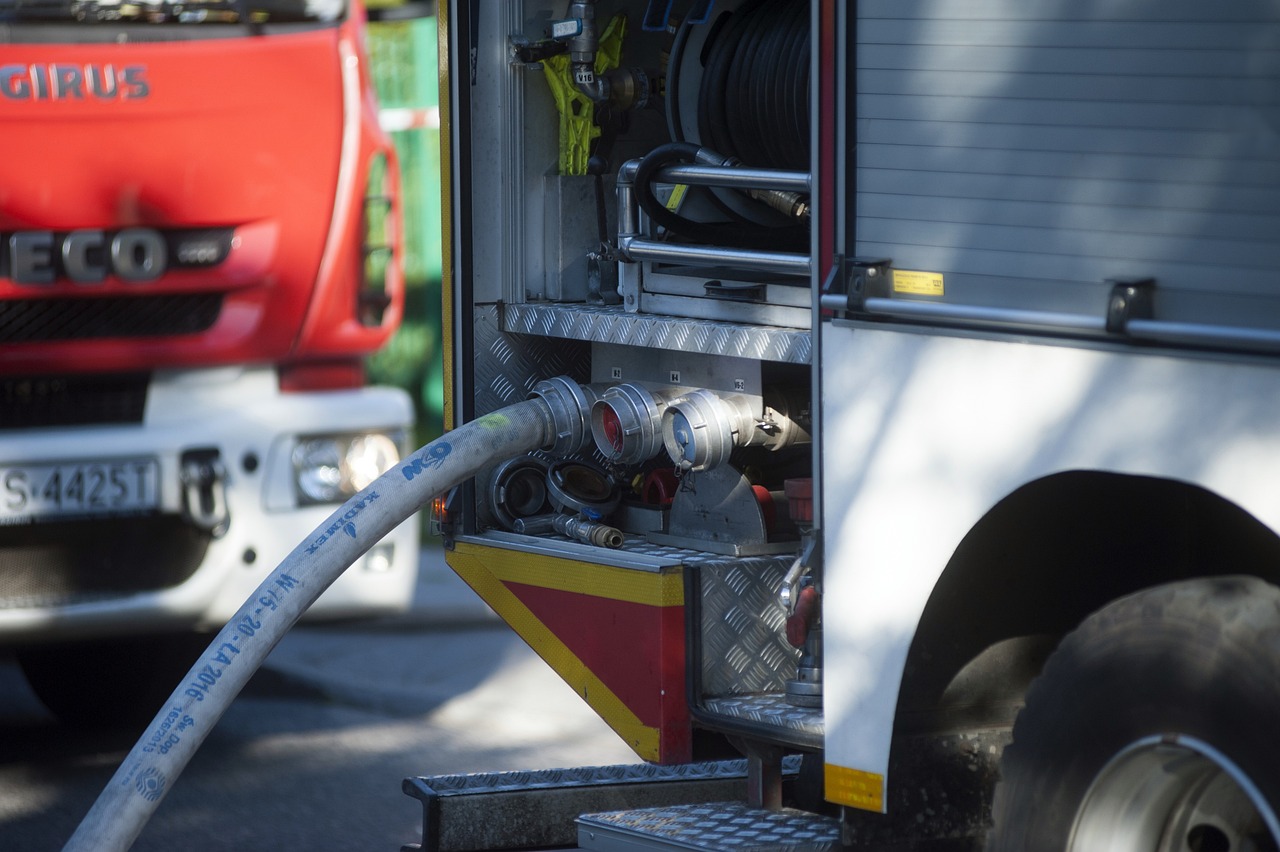
Understanding Fire Risks
When it comes to fire safety, understanding the risks within your home is the first step toward prevention. Every year, countless families face the devastating effects of house fires, many of which could have been avoided with a little awareness and proactive measures. It's essential to recognize that fires can ignite from various sources, and being informed about these potential hazards can significantly reduce the chances of a fire occurring in your home.
Some of the most common causes of household fires include:
- Cooking accidents: This is the leading cause of home fires. Unattended cooking or grease fires can escalate quickly, turning a simple meal into a major disaster.
- Electrical malfunctions: Faulty wiring, overloaded circuits, and malfunctioning appliances can spark fires without warning.
- Heating equipment: Space heaters, fireplaces, and other heating devices can be dangerous if not used properly or maintained regularly.
- Smoking materials: Cigarettes and other smoking paraphernalia can easily ignite flammable materials, leading to catastrophic fires.
- Flammable liquids: Improper storage of items like gasoline, paint thinners, and other chemicals can create a volatile environment.
Being aware of these risks is crucial, but it doesn't stop there. It's equally important to implement strategies to mitigate these hazards. For instance, ensuring that your kitchen is equipped with a fire extinguisher and that smoke alarms are installed can make a significant difference. Regular maintenance checks on electrical systems can also help catch potential issues before they lead to disaster. Think of your home as a fortress; you wouldn’t leave the gates unguarded, would you? Just like a fortress, your home needs defenses against the unexpected.
Moreover, understanding the behavior of fire can empower you to take action. Did you know that fire can spread at an astonishing rate? In just a matter of minutes, a small flame can engulf an entire room. This rapid spread emphasizes the importance of having a fire escape plan in place, as well as the need for early warning systems like smoke alarms. The quicker you can react, the better your chances of keeping your loved ones safe.
In summary, awareness is key. By identifying potential fire risks and taking proactive measures, you can protect your home and family from the dangers of fire. Remember, the goal is not just to prevent fires but to create an environment where everyone feels safe and secure. So, take the time to assess your home, identify hazards, and implement safety measures. Your vigilance today can save lives tomorrow.
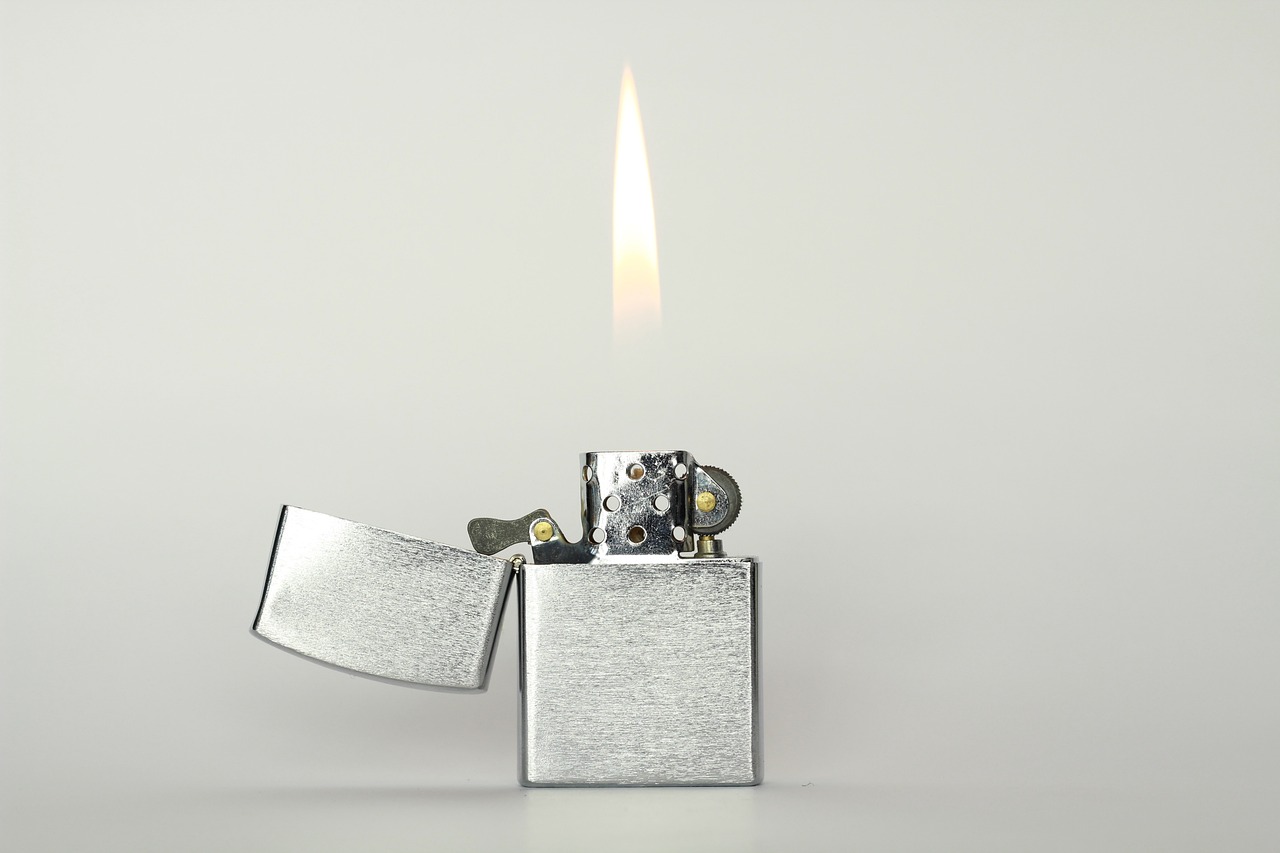
Fire Prevention Strategies
When it comes to keeping your home safe from fire, proactive measures are your best line of defense. Implementing effective can significantly reduce the risk of a fire breaking out in your home. Think of fire safety like a well-oiled machine; every part needs to work together to ensure everything runs smoothly. From the kitchen to the electrical systems, being vigilant about potential hazards can save your home and, more importantly, your loved ones.
One of the most crucial steps in fire prevention is maintaining a clean and organized living space. Clutter can easily become fuel for a fire, especially in areas where heat sources are present. Regularly check your home for flammable materials such as old newspapers, cardboard boxes, and even clothing that may accumulate around heating appliances. Keeping these items away from heat sources is essential. Additionally, consider implementing a regular cleaning schedule to ensure that your home remains free of potential fire hazards.
Another important aspect of fire prevention is practicing safe cooking habits. The kitchen is often referred to as the heart of the home, but it can also be a hotspot for fire incidents. Here are a few tips to ensure your cooking space remains safe:
- Never leave cooking unattended: If you must leave the kitchen, even for a moment, turn off the stove.
- Keep flammable items away from cooking surfaces: This includes dish towels, paper towels, and even wooden utensils.
- Use the right cookware: Ensure that pots and pans are made of materials that can withstand high temperatures.
Moving beyond the kitchen, electrical safety is another critical area to focus on. Electrical issues are a leading cause of home fires, and understanding how to maintain your electrical systems is vital. Regularly inspect your cords and outlets for signs of wear or damage. If you notice frayed wires or scorch marks, it’s time to call a professional. Additionally, avoid overloading outlets, as this can cause overheating and potential fires.
In summary, fire prevention strategies are all about being proactive. By maintaining a clean home, practicing safe cooking habits, and ensuring your electrical systems are in good condition, you can significantly reduce the risk of a fire. Remember, it’s better to be safe than sorry. Taking these steps not only protects your property but also ensures the safety of everyone inside your home.
Q: What are the most common causes of home fires?
A: The most common causes include cooking, heating equipment, electrical issues, and smoking materials.
Q: How often should I check my smoke alarms?
A: It's recommended to test your smoke alarms monthly and replace the batteries at least once a year.
Q: What should I do if I suspect an electrical issue?
A: If you notice any signs of electrical problems, such as flickering lights or strange smells, contact a licensed electrician immediately.
Q: How can I create a fire escape plan?
A: Identify all possible exits in your home, designate a meeting place outside, and practice your escape plan regularly.

Kitchen Safety Tips
The kitchen is often considered the heart of the home, but it can also be a hotspot for fires if safety precautions are not taken seriously. It's essential to be aware of the potential dangers lurking in your cooking space and to implement effective safety measures. First and foremost, never leave cooking food unattended. This might seem like a no-brainer, but it’s easy to get distracted, especially when you’re multitasking. Just think of it this way: leaving a pot on the stove is like leaving a child alone at a playground—it's an invitation for trouble!
Another critical aspect of kitchen safety is understanding how to handle and store flammable materials. Items such as cooking oils, paper towels, and even dish cloths can ignite if they come into contact with heat sources. Make it a habit to store these items away from the stove and other hot surfaces. For instance, consider using a designated cabinet for flammable materials that is far from your cooking area. Additionally, always keep a fire extinguisher within reach. It’s like having a safety net; you hope you never need it, but it’s crucial to have one just in case.
When it comes to kitchen appliances, using them correctly is vital. Always read the manual before using a new appliance and ensure that you are familiar with its functions. For example, if you’re using a deep fryer, keep the oil at the right temperature to avoid overheating and potential fires. Moreover, ensure that all appliances are in good working condition. Frayed cords or malfunctioning equipment can lead to electrical fires, so it’s essential to check these regularly.
Lastly, let’s talk about the importance of keeping your kitchen clean and organized. A cluttered kitchen can easily become a fire hazard. Regularly dispose of any expired food items and keep surfaces clear of unnecessary items. You might even consider setting a weekly cleaning schedule to ensure that your kitchen remains a safe space. Remember, a tidy kitchen is not just pleasant to look at; it’s also a safe kitchen!
- What should I do if a fire starts in my kitchen? If a fire starts, remember to stay calm. First, turn off the heat source if it’s safe to do so. If the fire is small, use a fire extinguisher or cover it with a metal lid. If the fire spreads, evacuate immediately and call emergency services.
- How often should I check my smoke alarms? It’s recommended to test your smoke alarms monthly and replace the batteries at least once a year. Additionally, you should replace smoke alarms every 10 years.
- Can I use water to extinguish a grease fire? No! Never use water on a grease fire, as it can cause the fire to spread. Instead, use a fire extinguisher rated for grease fires or cover it with a lid.

Safe Cooking Practices
When it comes to cooking, safety should always be your top priority. The kitchen is often the heart of the home, but it can also be a hotspot for accidents if proper precautions aren't taken. One of the most important rules is to **never leave cooking unattended**. Imagine stepping away for just a moment to answer the phone or check on something else; that brief distraction can lead to a disaster. Instead, stay close to the stove and keep an eye on your food. If you need to leave the kitchen, turn off the heat and return only when it’s safe to continue.
Another critical aspect of safe cooking is being mindful of your cooking appliances. Always use them according to the manufacturer's instructions. For instance, if you're using a frying pan, ensure you have the right oil temperature before adding food. Using too high a temperature can lead to **flames and smoke**. Additionally, consider investing in **flame-retardant oven mitts** and pot holders. They can be a lifesaver when handling hot cookware.
Moreover, be cautious with flammable materials. It’s essential to keep items like dish towels, paper towels, and even wooden utensils away from the stovetop. A simple spark can ignite these materials quickly. Store them in a safe location, away from the heat source. In fact, you might want to designate a specific area for these items to ensure they are always out of harm's way. Consider creating a small checklist for your kitchen to remind yourself of these safe practices:
- Keep flammable materials away from the stove.
- Always supervise cooking food.
- Use appliances as directed.
- Have a fire extinguisher nearby.
Lastly, it’s wise to have a fire extinguisher in your kitchen. This tool can be crucial in controlling small fires before they escalate. Make sure everyone in your household knows where it is located and how to use it. Remember, being prepared is half the battle when it comes to fire safety in the kitchen. By adopting these **safe cooking practices**, you can enjoy your culinary adventures while minimizing the risk of fire hazards.
Q: What should I do if a fire starts while I'm cooking?
A: If a fire starts, stay calm and follow these steps: turn off the heat, cover the flames with a lid if it's safe to do so, and use a fire extinguisher if you have one. If the fire grows, evacuate immediately and call emergency services.
Q: How can I prevent grease fires?
A: To prevent grease fires, avoid overheating oil, never leave frying food unattended, and keep a lid nearby to smother flames if necessary. Always have a fire extinguisher accessible in the kitchen.
Q: What types of fire extinguishers are best for kitchen use?
A: Class K fire extinguishers are specifically designed for kitchen fires involving cooking oils and fats. However, having a multi-purpose extinguisher (Class ABC) can also be beneficial for other types of fires.
Q: How often should I check my smoke alarm?
A: It’s recommended to test your smoke alarms at least once a month and replace the batteries at least once a year. Additionally, replace smoke alarms every 10 years or according to the manufacturer's instructions.
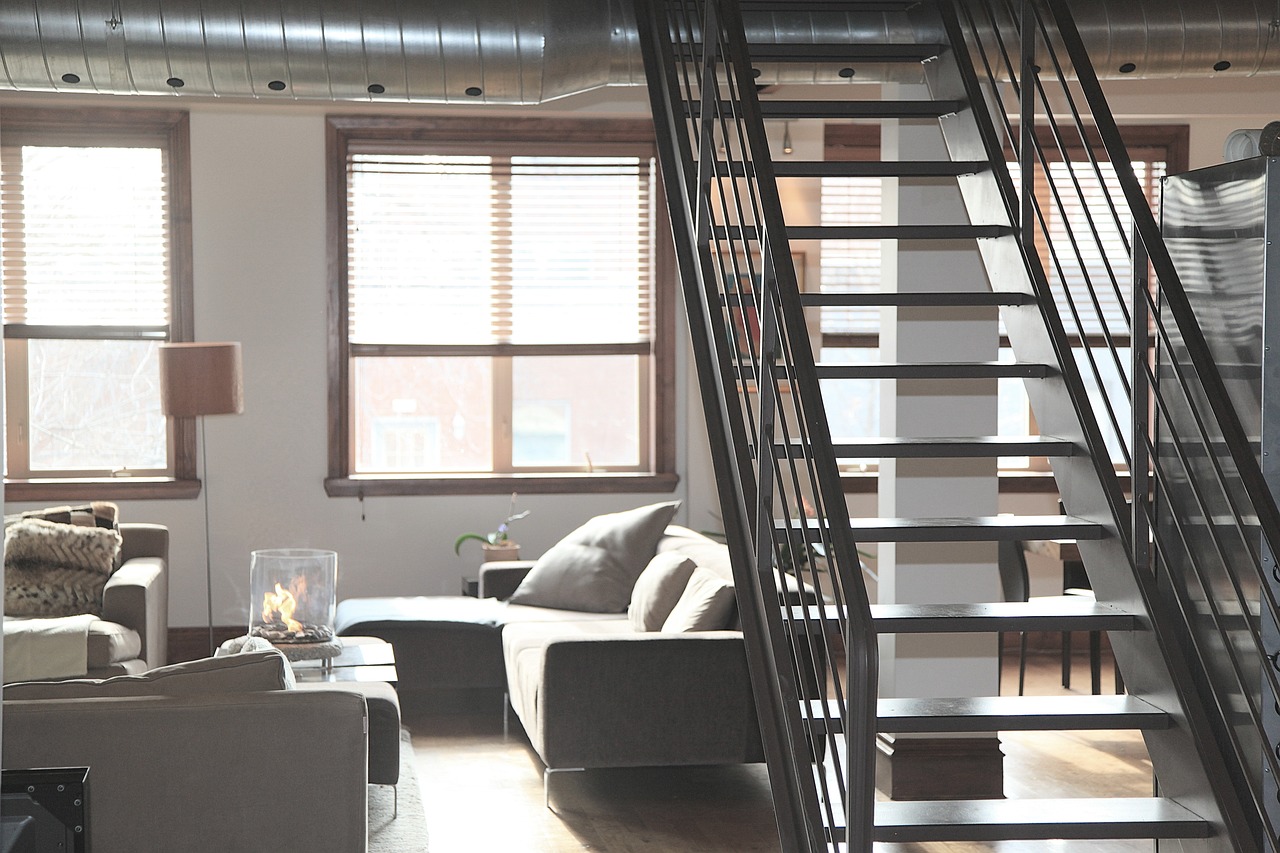
Handling Flammable Materials
When it comes to fire safety in the kitchen, understanding how to properly handle and store flammable materials is absolutely essential. Many household items, from cooking oils to cleaning supplies, can ignite if not managed correctly. Think of your kitchen as a bustling restaurant kitchen, where every ingredient and tool must be in its right place to prevent chaos. Just as chefs are trained to handle fire with care, so too should we be vigilant about our flammable materials.
First and foremost, it's important to store flammable materials safely. This means keeping items like cooking oils, aerosols, and cleaning agents in a cool, dry place, away from direct heat sources. For instance, storing your cooking oil near the stove might seem convenient, but it can lead to a fiery disaster if the oil gets too hot. Instead, consider placing these materials in a cabinet that is not directly adjacent to your cooking area. Remember, out of sight doesn’t mean out of mind; just ensure they’re easily accessible when needed.
Moreover, always check for leaks or damages in containers that hold flammable substances. A small crack in a bottle of lighter fluid or a spray can could lead to a slow leak that might go unnoticed until it’s too late. Regularly inspect these items and dispose of any that are damaged. If you’re unsure about how to dispose of hazardous materials, check with your local waste management services for guidance.
Another critical aspect is the proper use of flammable materials. When using products like aerosol sprays or cleaning agents, make sure to do so in well-ventilated areas. This not only helps to prevent the buildup of flammable vapors but also protects your health. If you’re using a flammable cleaner, for example, ensure that there are no open flames or heat sources nearby. It’s akin to mixing oil and water—these two elements just don’t mix well, and the same goes for fire and flammable materials.
Lastly, consider having a designated area for flammable materials. This could be a locked cabinet to ensure that children or pets cannot accidentally access them. Just like you wouldn’t leave a loaded gun lying around, don’t leave your flammable materials exposed. A little precaution goes a long way in keeping your home safe.
In summary, handling flammable materials requires awareness and proactive measures. By storing them safely, checking for damages, using them wisely, and keeping them out of reach, you can significantly reduce the risk of a kitchen fire. Remember, your kitchen should be a place of creativity and joy, not danger. So, let’s keep it that way!
- What are some common flammable materials found in the kitchen? Common flammable materials include cooking oils, cleaning supplies, paper towels, and aerosol cans.
- How often should I check my flammable materials for leaks? It's advisable to check them at least once a month to ensure they are in good condition.
- What should I do if I smell gas or see a leak? Evacuate the area immediately and contact your local fire department or gas company for assistance.
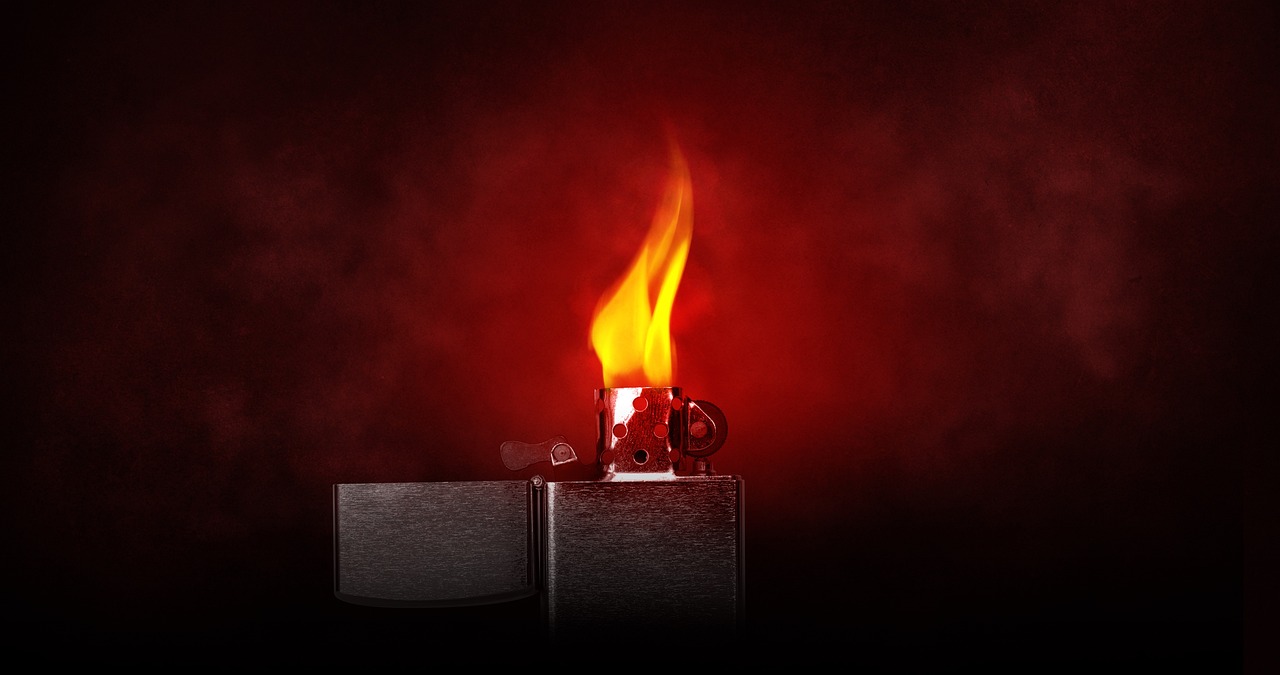
Electrical Safety Measures
Electrical safety is a critical aspect of preventing home fires, as electrical issues are one of the leading causes of such disasters. To protect your home and loved ones, it’s essential to be vigilant about the state of your electrical systems. Regular inspections and maintenance can help identify potential hazards before they escalate into dangerous situations. For instance, frayed wires, overloaded circuits, and malfunctioning outlets can all pose significant risks. By understanding how to maintain your electrical systems, you can create a safer living environment.
One of the first steps in ensuring electrical safety is to avoid overloading outlets. Many people are tempted to plug multiple devices into a single outlet, especially during holiday seasons or when hosting gatherings. However, this practice can lead to overheating and potentially ignite a fire. Instead, consider using power strips with built-in circuit breakers, which can help manage the load more effectively. Additionally, be mindful of the wattage of bulbs you use in light fixtures; using a bulb with too high a wattage can generate excessive heat and increase fire risk.
It's also crucial to be aware of the signs of electrical problems. If you notice frequent tripping of circuit breakers, flickering lights, or a persistent burning smell, it's time to take action. Ignoring these warning signs can lead to severe consequences. If you're unsure about the state of your electrical system, consulting a licensed electrician for a thorough inspection can provide peace of mind. They can identify potential issues and recommend necessary repairs or upgrades. Remember, investing in your electrical safety today can prevent devastating fires tomorrow.
In addition to these measures, it's essential to educate everyone in your household about electrical safety. Simple practices, like unplugging appliances when not in use and avoiding the use of extension cords as permanent solutions, can make a significant difference. Furthermore, having a fire extinguisher readily available and knowing how to use it can be lifesaving in the event of an electrical fire.
To summarize, here are some key electrical safety measures to keep in mind:
- Regularly inspect electrical cords and outlets for damage.
- Avoid overloading outlets and circuits.
- Use light bulbs that match the fixture's recommended wattage.
- Be alert to signs of electrical problems and consult a professional if needed.
- Educate your family on safe electrical practices.
By following these guidelines, you can significantly reduce the risk of electrical fires in your home. Remember, safety is not just a precaution; it’s a responsibility that can protect you and your loved ones from harm.
Q1: How often should I have my electrical system inspected?
A1: It’s recommended to have your electrical system inspected at least every 3 to 5 years, or sooner if you notice any issues.
Q2: What should I do if I smell burning near an outlet?
A2: If you smell burning near an outlet, immediately unplug any devices connected to it and turn off the power at the circuit breaker. Contact a licensed electrician to investigate the issue.
Q3: Can I replace electrical outlets myself?
A3: While it’s possible to replace outlets yourself, it’s best to hire a licensed electrician, especially if you’re not familiar with electrical work. Safety should always come first!
Q4: What types of appliances should I avoid using on extension cords?
A4: High-wattage appliances, such as space heaters, refrigerators, and microwaves, should not be used on extension cords. They can easily overload the cord and pose a fire risk.
Q5: How can I educate my family about electrical safety?
A5: You can hold family meetings to discuss electrical safety, create a list of dos and don’ts, and even practice scenarios in case of an electrical fire. Making safety a priority in your family will help everyone stay informed.

Importance of Smoke Alarms
Smoke alarms are not just a piece of equipment; they are your first line of defense against the devastating effects of fire. Imagine this: a fire breaks out in your home while you are sleeping. Without a smoke alarm, you might not wake up until it’s too late. These small devices can detect smoke and alert you, providing you with precious seconds to escape. In fact, the National Fire Protection Association (NFPA) states that working smoke alarms can reduce the risk of dying in a reported fire by 50%. Isn’t that a compelling reason to ensure they are installed and maintained?
Smoke alarms work by sensing smoke particles in the air, triggering a loud alarm that wakes you up and alerts others in the house. They come in various types, including ionization and photoelectric alarms, each with its unique benefits. For instance, ionization alarms are generally more responsive to flaming fires, while photoelectric alarms are more effective at detecting smoldering fires. Understanding these differences can help you make an informed decision when choosing smoke alarms for your home.
But simply having smoke alarms isn’t enough. Regular testing and maintenance are crucial to ensure they function correctly when you need them most. It’s recommended to test your smoke alarms at least once a month. If you hear a chirping sound, that’s a sign that the battery needs to be replaced. Additionally, smoke alarms should be replaced every 10 years to ensure they are up to date and functioning effectively. Keeping a schedule for maintenance can be as simple as marking your calendar or setting reminders on your phone.
Strategic placement of smoke alarms is also vital. They should be installed in every sleeping area, outside each separate sleeping area, and on every level of your home, including the basement. If you have a multi-story home, consider placing alarms in hallways and common areas where they can be easily heard. Remember, the louder the alarm, the better chance you have of waking up in time!
In summary, smoke alarms are essential for protecting your home and loved ones from fire hazards. They save lives, but only if they are properly installed, maintained, and regularly tested. Are you ready to take action and ensure your home is equipped with these life-saving devices?
- How often should I test my smoke alarms? It’s recommended to test them at least once a month.
- When should I replace my smoke alarms? Smoke alarms should be replaced every 10 years.
- Where should I install smoke alarms? Install them in every sleeping area, outside each sleeping area, and on every level of your home.
- What type of smoke alarm is best? A combination of ionization and photoelectric alarms provides the best coverage.
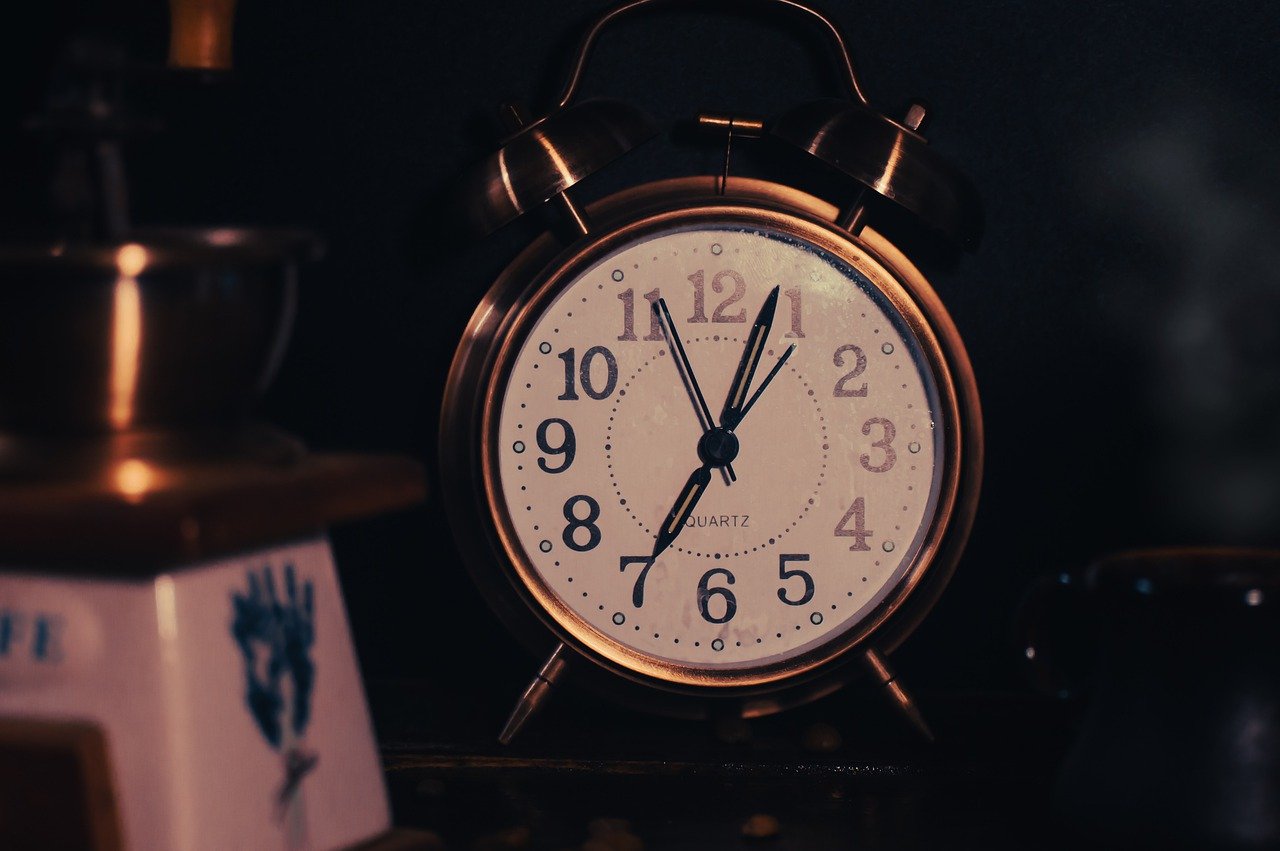
Choosing the Right Smoke Alarm
When it comes to ensuring the safety of your home and loved ones, choosing the right smoke alarm is an essential step that should not be overlooked. With various options available on the market, it can feel overwhelming to determine which type is best suited for your needs. However, understanding the different types of smoke alarms and their specific features can make this decision much easier.
First and foremost, it’s crucial to know that smoke alarms can be categorized into two main types: ionization smoke alarms and photoelectric smoke alarms. Ionization alarms are particularly effective at detecting fast-burning fires, such as those caused by paper or flammable liquids. On the other hand, photoelectric alarms excel at sensing slow-burning fires, which often produce more smoke before flames become visible, like those involving upholstery or electrical wiring. For optimal safety, consider installing both types of alarms in your home to cover all potential fire scenarios.
Another important factor to consider is whether you want a smoke alarm that is interconnected or standalone. Interconnected smoke alarms communicate with one another, meaning that if one alarm detects smoke, all alarms in the network will sound. This feature is especially beneficial in larger homes where you may not hear a standalone alarm in a distant room. In contrast, standalone alarms are generally easier to install and maintain but may not offer the same level of comprehensive coverage.
Additionally, you may want to consider smoke alarms with built-in features such as carbon monoxide detection or voice alerts. Carbon monoxide detectors can provide an extra layer of protection, as this colorless, odorless gas can be just as deadly as fire itself. Voice alerts can also be more effective than traditional beeping sounds, as they can provide clear instructions, like “Fire! Get out!” This can be particularly helpful in waking up children or elderly family members during a fire emergency.
When choosing a smoke alarm, it’s also essential to check for certifications. Look for alarms that meet the standards set by organizations such as the Underwriters Laboratories (UL) or the National Fire Protection Association (NFPA). These certifications ensure that the alarms have been rigorously tested for reliability and performance.
Lastly, remember that the placement of your smoke alarms is just as important as the type you choose. Smoke alarms should be installed on every level of your home, inside each bedroom, and outside sleeping areas. Regular maintenance, including testing your alarms monthly and replacing batteries at least once a year, will help ensure they function correctly when you need them most.
- How often should I replace my smoke alarms? It's recommended to replace smoke alarms every 10 years, even if they appear to be working properly.
- Can I use a smoke alarm without a battery? No, smoke alarms require batteries or a hardwired power source to function. Always ensure they are powered.
- What should I do if my smoke alarm goes off? If your smoke alarm sounds, evacuate the premises immediately and call emergency services. Never ignore an alarm!
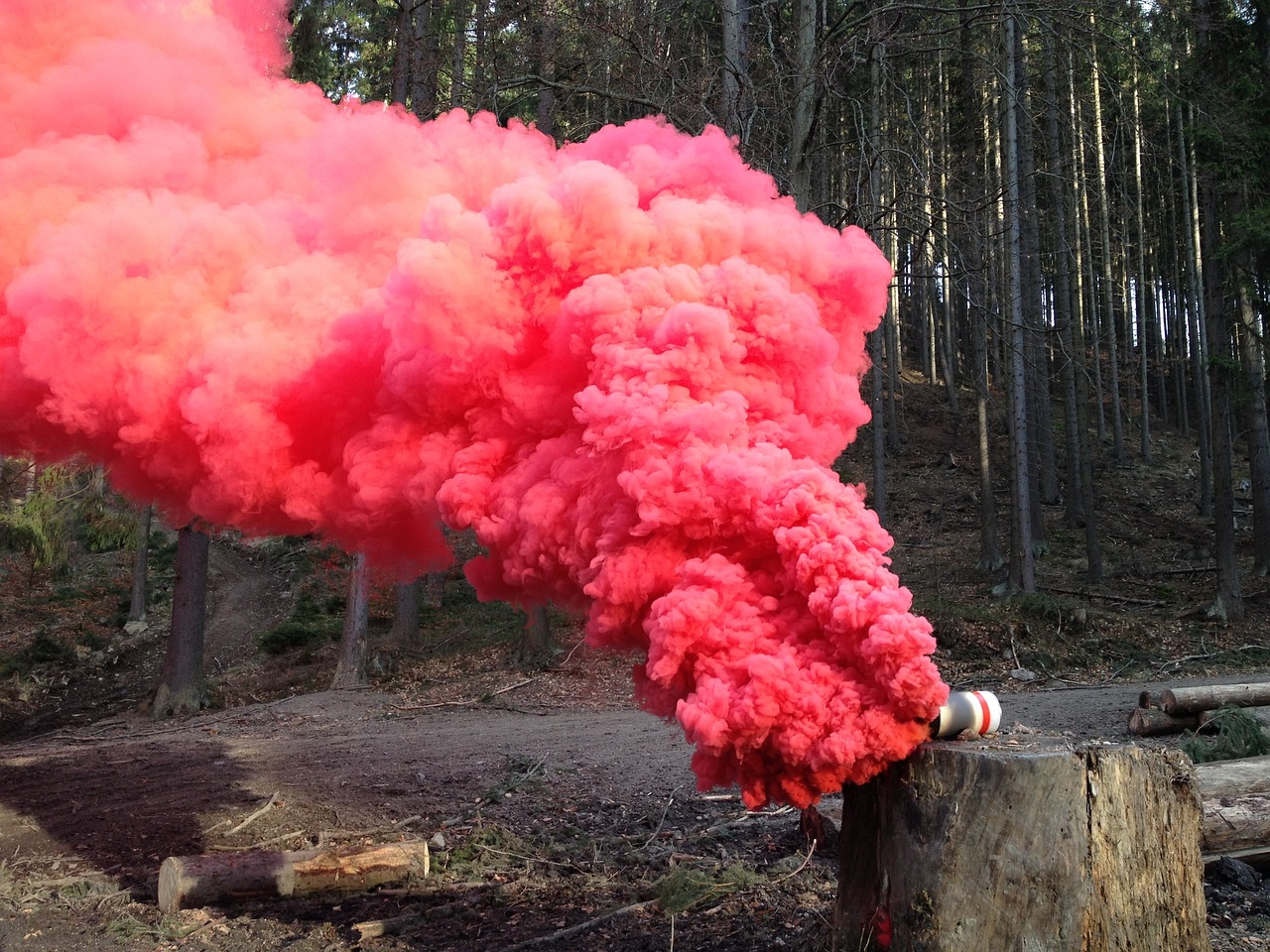
Maintaining Smoke Alarms
Maintaining smoke alarms is not just a good idea; it's a vital aspect of fire safety that can mean the difference between life and death. Smoke alarms are your first line of defense against fire hazards, alerting you to danger before it becomes catastrophic. To ensure these devices function effectively, it's essential to establish a routine maintenance schedule. This includes regular testing, battery replacements, and knowing when it's time to retire an old unit.
First and foremost, testing your smoke alarms is crucial. You should test each alarm at least once a month by pressing the test button. If you hear a loud beep, congratulations! Your alarm is functioning correctly. However, if you don’t hear anything, it’s time to replace the batteries or the entire unit. Many people overlook this simple step, but it can be a lifesaver. Think of it as checking the oil in your car; neglecting it could lead to serious issues down the road.
Speaking of batteries, it’s recommended to replace them at least once a year, even if the alarm seems to be working fine. A good tip is to change the batteries when you change your clocks for Daylight Saving Time. This way, you’ll remember to keep your smoke alarms in top shape throughout the year. Additionally, if your smoke alarm starts chirping, it’s a signal that the battery is low and needs immediate attention.
Another important aspect of smoke alarm maintenance is knowing when to replace the entire unit. Most smoke alarms have a lifespan of about 10 years. After this period, they may not function as effectively, even with new batteries. Check the manufacturing date on the back of the alarm. If it’s older than ten years, it’s time to invest in a new one. Remember, a smoke alarm is only as good as its ability to detect smoke!
Finally, ensure that your smoke alarms are strategically placed throughout your home. The National Fire Protection Association (NFPA) recommends having smoke alarms installed in every sleeping area, outside each separate sleeping area, and on every level of your home, including the basement. This way, you can maximize the chances of waking up in case of a fire. It’s not just about having smoke alarms; it’s about having them where they can do the most good.
In summary, maintaining smoke alarms involves a few simple yet essential steps:
- Test alarms monthly.
- Replace batteries annually.
- Replace smoke alarms every 10 years.
- Install alarms in key areas of your home.
By following these guidelines, you can ensure that your smoke alarms remain effective and ready to protect you and your loved ones from the dangers of fire.
Q: How often should I test my smoke alarms?
A: You should test your smoke alarms at least once a month. Regular testing ensures that they are functioning properly.
Q: When should I replace the batteries in my smoke alarm?
A: It's recommended to replace the batteries at least once a year, but you should also replace them immediately if the alarm starts chirping.
Q: How do I know when to replace my smoke alarm?
A: Smoke alarms should be replaced every 10 years. Check the manufacturing date on the back of the unit to determine its age.
Q: Where should I install smoke alarms in my home?
A: Install smoke alarms in every sleeping area, outside each separate sleeping area, and on every level of your home, including the basement.

Creating a Fire Escape Plan
Creating a fire escape plan is not just a good idea; it's a **necessity** that can mean the difference between life and death in an emergency. Imagine waking up in the middle of the night to the sound of a smoke alarm blaring. Panic sets in, and every second counts. Having a well-thought-out escape route can save your life and the lives of your loved ones. So, how do you go about crafting an effective fire escape plan? Let's dive into the essential steps!
First and foremost, you need to **identify** the best escape routes in your home. Walk through each room and consider the quickest ways to exit. Look for doors and windows that can serve as exits. It’s important to keep in mind that some exits may be blocked by furniture or other obstacles, so ensure that these pathways are clear at all times. Additionally, if you have multiple floors, think about how you would escape from upper levels. A sturdy **ladder** can be an invaluable tool for reaching safety from higher floors.
Next, it's crucial to designate a **meeting place** outside your home where everyone can gather after escaping. This could be a neighbor's house, a tree, or any landmark that is a safe distance away from the building. This way, you can quickly account for everyone and ensure that no one is left behind in the chaos.
Now, once your routes and meeting place are established, it’s time to practice! Conducting regular fire drills is an excellent way to ensure that everyone knows what to do when the alarm goes off. You can make it fun and engaging by timing how fast everyone can get out of the house. This not only makes the process enjoyable but also helps to reinforce the importance of the plan.
Additionally, consider creating a visual map of your escape routes. This can be especially helpful for children or elderly family members. Place this map in a visible location, like on the refrigerator. It should clearly indicate all exits and the designated meeting place. Remember, the more familiar everyone is with the plan, the more effective it will be in an emergency.
Lastly, don’t forget to review and update your fire escape plan regularly. Changes in your household, such as new family members or rearranged furniture, can affect your escape routes. Make it a habit to revisit your plan at least once a year or whenever there’s a significant change in your home environment.
In summary, creating a fire escape plan involves:
- Identifying escape routes
- Designating a meeting place
- Practicing regularly
- Creating a visual map
- Reviewing and updating the plan
By taking these steps, you can ensure that your household is prepared for a fire emergency. Remember, in the face of danger, a well-practiced escape plan can save lives!
Q: How often should I practice my fire escape plan?
A: It's recommended to practice your fire escape plan at least twice a year. This helps keep everyone familiar with the routes and procedures.
Q: What should I do if I can't escape through my designated routes?
A: If your primary escape routes are blocked, try to find an alternative exit. If all exits are blocked, stay low to the ground to avoid smoke inhalation and signal for help from a window.
Q: How can I make my fire escape plan inclusive for children or elderly family members?
A: Use simple language and visuals to explain the plan. Practice together and ensure that everyone knows their roles. Consider any mobility issues and plan accordingly.
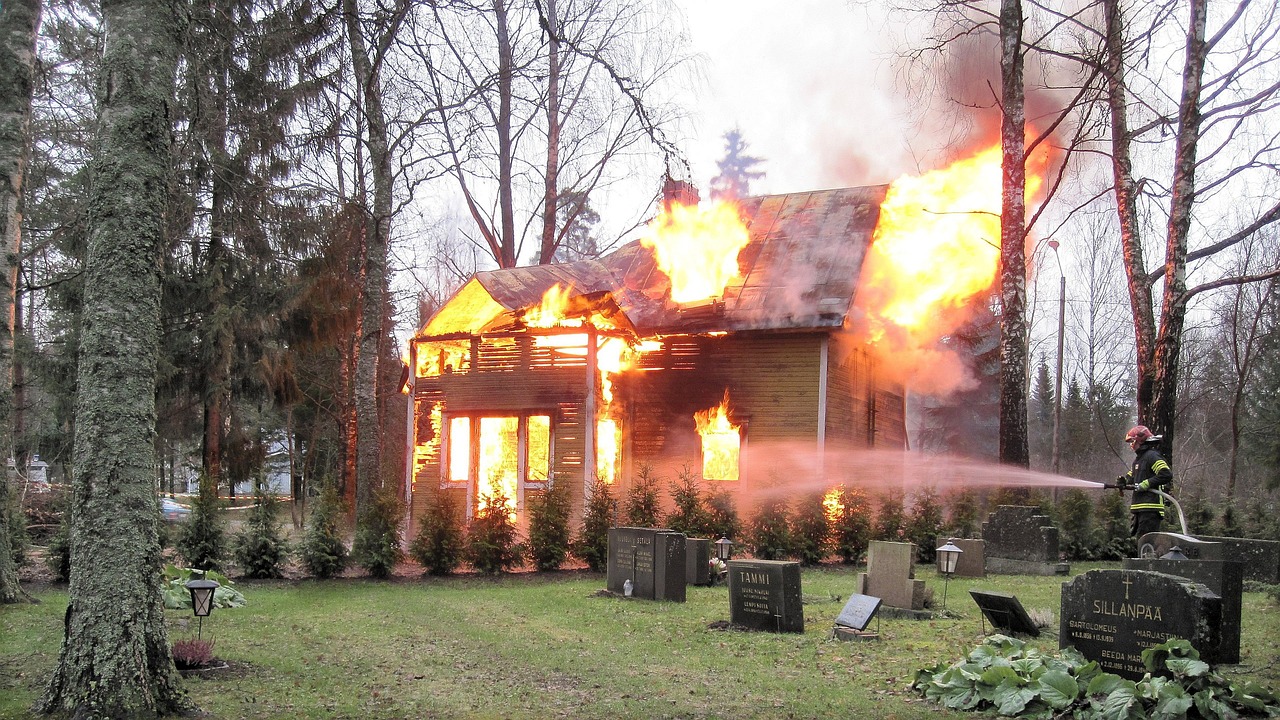
Designating Escape Routes
When it comes to fire safety, is a crucial step that can mean the difference between safety and danger during an emergency. Imagine waking up in the middle of the night to the smell of smoke; your mind races as you try to remember the fastest way out of your home. This is why planning and practicing your escape routes is essential. Start by identifying all possible exits in your home, including doors and windows. Each room should have at least two ways to escape, if possible. This ensures that if one route is blocked by fire or smoke, you have alternatives.
Next, it’s important to clearly mark these escape routes. You could use bright colored tape or signs to indicate the paths, especially in areas that may be less familiar, like basements or attics. In addition to marking the routes, you should also consider the obstacles that might impede a quick exit. For instance, furniture placement can block pathways, so it’s wise to keep them clear. Regularly review your escape plan with your family, ensuring everyone knows the safest and quickest routes out of the house.
Another vital aspect is practicing your escape plan. Conducting fire drills not only helps to familiarize everyone with the routes but also builds confidence. During these drills, encourage family members to time themselves as they exit the house. This will give them a sense of urgency and help them understand the importance of acting quickly in an actual emergency. Remember, the goal is to exit the home as swiftly as possible while remaining calm.
Finally, consider having a designated meeting point outside your home where everyone can gather after escaping. This could be a neighbor's house, a tree, or any landmark that is easily identifiable. Having a meeting point ensures that everyone is accounted for and helps to avoid confusion during a chaotic situation.
In summary, designating escape routes is not just about knowing how to get out; it’s about being prepared, practicing regularly, and ensuring that every member of your household understands the plan. By taking these steps, you significantly increase your chances of a safe evacuation in the event of a fire.
- What should I do if my escape route is blocked by fire?
If your primary escape route is blocked, remain calm and use your secondary route. If all routes are blocked, stay in a room with a window, seal the door with towels, and signal for help.
- How often should I practice my escape plan?
It’s recommended to practice your escape plan at least twice a year. This ensures that everyone remembers the routes and can exit quickly in an emergency.
- What if I have young children or pets?
When designating escape routes, ensure that you have a plan for safely evacuating children and pets. Assign an adult to be responsible for each child and pet during drills.
- Can I use my phone to call for help while escaping?
While it’s important to call for help, your priority should be to escape first. Only call for help once you are in a safe location away from the fire.
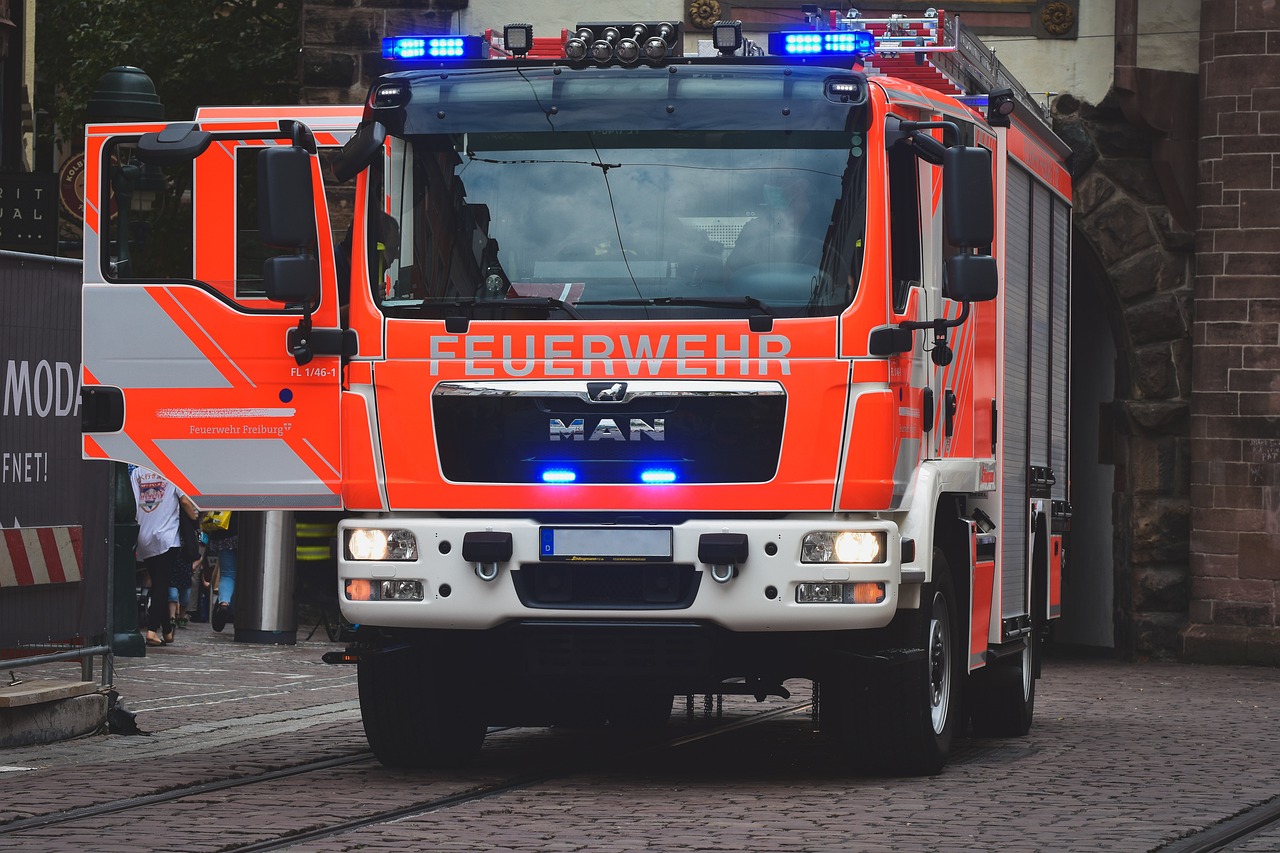
Conducting Fire Drills
Fire drills are not just a routine; they are a lifesaver. Imagine a scenario where a fire breaks out in your home. Panic sets in, and everyone scrambles to find the nearest exit. This is where the significance of conducting regular fire drills comes into play. By practicing fire drills, you ensure that every member of your household knows exactly what to do and where to go when the alarm sounds. It’s all about creating muscle memory so that in a stressful situation, actions become instinctual rather than chaotic.
To effectively conduct a fire drill, start by setting a date and time that works for everyone in your household. Make sure to inform all participants ahead of time, but don’t disclose the exact moment the drill will take place. This unpredictability simulates a real emergency, making the drill more effective. When the alarm sounds, everyone should respond as if it were a real fire. This means leaving all belongings behind, staying calm, and heading to your designated meeting spot outside the home.
During the drill, observe how quickly and efficiently everyone evacuates. Are there any obstacles in the way? Are there areas in your home that could be improved for a quicker exit? After the drill, gather everyone to discuss what went well and what could be improved. This debriefing is crucial; it allows you to address any concerns and make necessary adjustments to your escape plan.
Moreover, it's beneficial to conduct fire drills at different times of the day and under various conditions. For example, practice during the night when visibility is low or when the household is engaged in different activities. This prepares everyone for the unexpected, ensuring that no matter the circumstances, they can react promptly and safely.
Incorporating fire drills into your household routine can be a fun yet educational experience. You might even consider turning it into a family event with a reward system for participation. This approach not only teaches fire safety but also fosters teamwork and communication among family members.
In conclusion, conducting fire drills is an essential practice that can significantly enhance your family's preparedness for a fire emergency. By making it a regular activity, you instill a sense of confidence and readiness in your household. Remember, when it comes to fire safety, practice makes perfect.
- How often should we conduct fire drills? It is recommended to conduct fire drills at least twice a year to keep everyone familiar with the escape plan.
- What should we do if someone is missing during a drill? Always prioritize safety. If someone is unaccounted for, do not re-enter the building. Inform the authorities immediately.
- Can we use a smoke detector as a fire drill alarm? Yes, you can use a smoke detector during drills, but ensure everyone knows it's a drill to avoid panic.
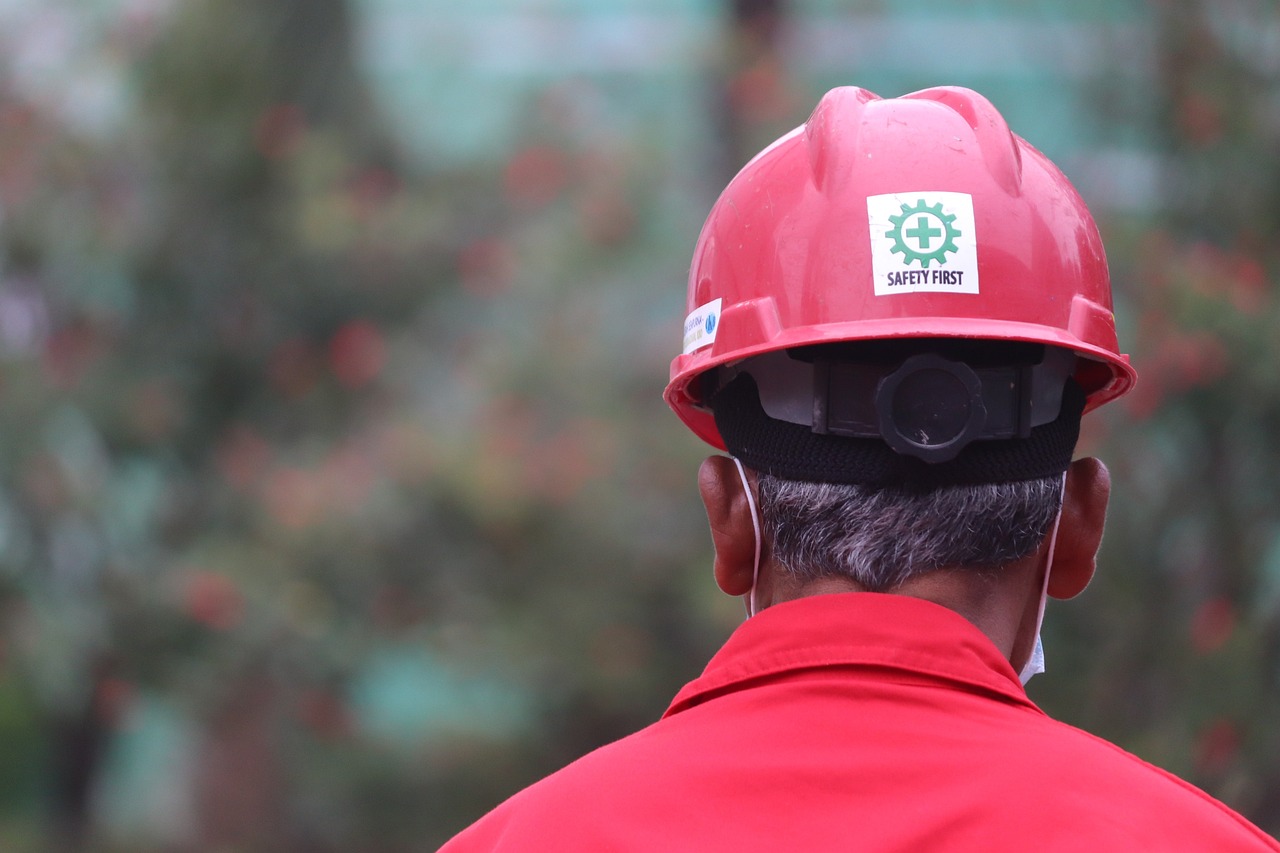
Fire Extinguishers: Essential Tools
When it comes to protecting your home and loved ones from fire hazards, fire extinguishers are invaluable tools that can make a significant difference. These devices are designed to control small fires before they escalate into larger, uncontrollable blazes. However, not all fire extinguishers are created equal; understanding the different types and their appropriate uses is crucial for effective fire safety. In this section, we will explore the various types of fire extinguishers, how to use them properly, and where to place them in your home for maximum effectiveness.
Fire extinguishers are categorized based on the type of fire they are designed to combat. Here’s a quick overview of the main types:
| Type | Suitable For | Example Uses |
|---|---|---|
| A | Ordinary combustibles (wood, paper, cloth) | Household fires, office fires |
| B | Flammable liquids (gasoline, oil, paint) | Kitchen fires, garage fires |
| C | Electrical fires | Wiring, appliances, power tools |
| D | Combustible metals (magnesium, titanium) | Industrial settings, metal workshops |
| K | Cooking oils and fats | Kitchen fires involving grease |
Knowing which type of fire extinguisher to use is only half the battle. You also need to understand how to use one effectively. The PASS technique is a simple and effective method to remember when operating a fire extinguisher:
- Pull the pin: This will break the seal and allow you to use the extinguisher.
- Aim low: Point the nozzle at the base of the fire, not the flames.
- Squeeze the handle: This releases the extinguishing agent.
- Sweep from side to side: Move the nozzle back and forth until the fire is out.
Placement of fire extinguishers is equally important. You should have at least one extinguisher on each level of your home, particularly in high-risk areas such as the kitchen and garage. It’s also wise to keep one near your outdoor grill or fire pit. Regularly check the pressure gauge to ensure it’s in the operable range and inspect for any signs of damage. Remember, having a fire extinguisher is not enough; knowing how to use it and ensuring it's accessible can be the difference between a small incident and a major disaster.
In summary, fire extinguishers are essential tools for home safety. By understanding the different types, knowing how to use them, and ensuring they are properly placed, you can significantly enhance your fire safety measures. Don’t wait until it’s too late; make fire extinguishers a part of your home safety plan!
1. How often should I check my fire extinguishers?
It's recommended to check your fire extinguishers monthly to ensure they are in good working order. Look for any signs of damage and check the pressure gauge.
2. How long do fire extinguishers last?
Most fire extinguishers have a lifespan of 5 to 15 years, depending on the type and manufacturer. Always check the label for specific information.
3. Can I refill my fire extinguisher myself?
No, refilling a fire extinguisher should only be done by a certified professional. Attempting to refill it yourself can be dangerous and may void the warranty.
4. Where should I place fire extinguishers in my home?
Place fire extinguishers in easily accessible locations, such as near exits, in the kitchen, and on every floor of your home. Avoid placing them in areas that could become blocked during a fire.

Types of Fire Extinguishers
When it comes to fire safety, understanding the different is essential. Each type is specifically designed to combat different classes of fires, and using the wrong kind can lead to disastrous consequences. Here's a breakdown of the most common types of fire extinguishers you'll encounter:
| Type | Class of Fire | Common Uses |
|---|---|---|
| Water (APW) | A | Wood, paper, cloth |
| Foam | A, B | Flammable liquids, solids |
| Dry Powder | A, B, C | Flammable gases, liquids, and electrical fires |
| Carbon Dioxide (CO2) | B, C | Flammable liquids and electrical fires |
| Wet Chemical | K | Cooking oils and fats |
Each type of extinguisher has its unique properties that make it effective against specific fire hazards. For instance, the Water (APW) extinguisher is great for fires involving ordinary combustibles like wood and paper, but it should never be used on electrical or flammable liquid fires. On the other hand, the Dry Powder extinguisher is incredibly versatile, capable of tackling fires involving solids, liquids, and even gases. This makes it a popular choice for both home and industrial use.
The Carbon Dioxide (CO2) extinguisher is particularly useful in areas with electrical equipment, as it displaces oxygen and suffocates the fire without leaving any residue. However, it's important to note that CO2 extinguishers can be less effective on larger fires or those fueled by materials that require cooling.
For those who love to cook, investing in a Wet Chemical extinguisher is a smart move. These extinguishers are specifically designed to tackle kitchen fires that involve cooking oils and fats. They work by cooling the flames and creating a barrier between the fuel and the oxygen, effectively extinguishing the fire.
In summary, knowing the types of fire extinguishers and their applications is crucial for effective fire safety. Always ensure that you have the right type of extinguisher for your specific needs, and don't hesitate to seek professional advice if you're unsure. Remember, being prepared can make all the difference in an emergency!
- What type of fire extinguisher should I have in my home? It is recommended to have a multi-purpose extinguisher, such as a dry powder extinguisher, which can handle various types of fires.
- How often should I check my fire extinguishers? Fire extinguishers should be checked monthly, and they should be serviced annually by a professional.
- Can I use water on all types of fires? No, water should only be used on Class A fires. Never use water on electrical or flammable liquid fires.
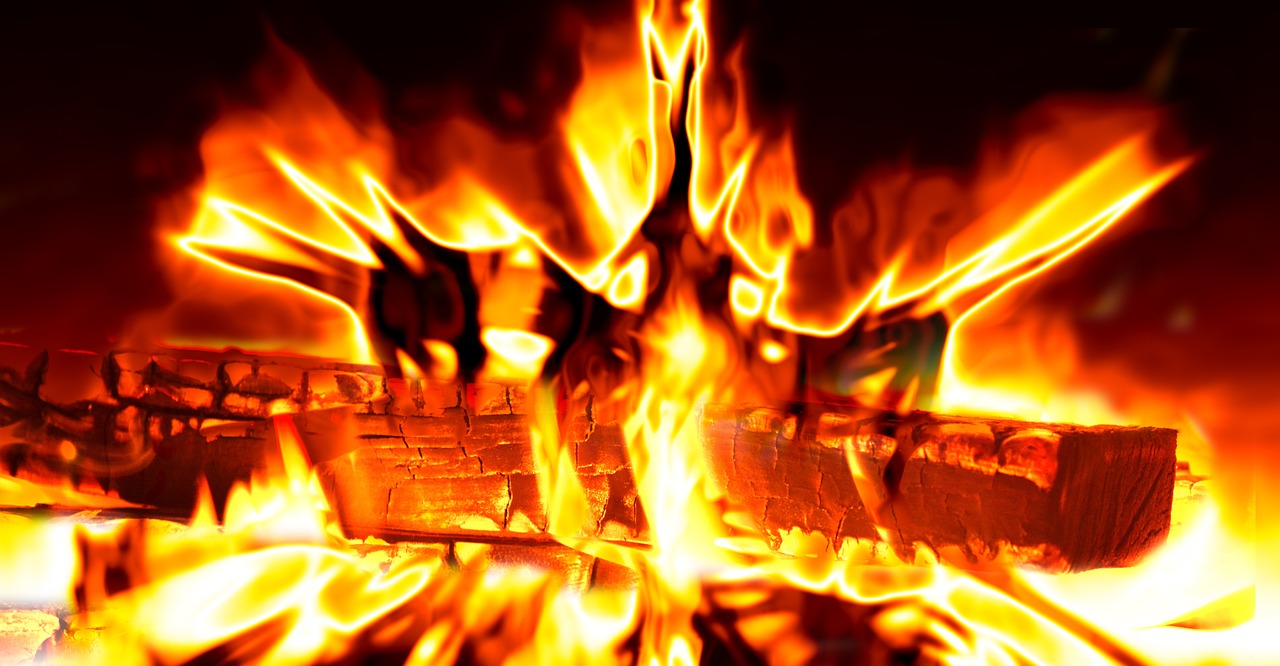
How to Use a Fire Extinguisher
Knowing how to properly use a fire extinguisher can be a lifesaver in an emergency. When a fire breaks out, every second counts, and having the right knowledge can make all the difference. The process can be easily remembered by following the four essential steps encapsulated in the acronym P.A.S.S.: Pull, Aim, Squeeze, and Sweep. Let's break these down:
1. Pull: First, you need to pull the pin at the top of the extinguisher. This pin keeps the handle from being accidentally pressed, so it's crucial to remove it before you can operate the extinguisher. Make sure to hold the extinguisher upright while doing this.
2. Aim: Next, aim the nozzle or hose at the base of the fire. It’s important to target the source of the flames, not the flames themselves. This is where the fire is most vulnerable, and hitting it there can help extinguish it more effectively.
3. Squeeze: After aiming, squeeze the handle to release the extinguishing agent. Make sure to apply steady pressure. If you let go, the flow will stop, and you’ll have to start over. Keep your grip firm!
4. Sweep: Finally, sweep the nozzle from side to side at the base of the fire until it appears to be out. Remember to watch for re-ignition; sometimes, fires can flare back up, so stay vigilant.
It's also worth noting that different types of fire extinguishers are designed for different classes of fires (like grease, electrical, or flammable liquids). Therefore, it's essential to know the type of extinguisher you have and what fires it can combat. Here’s a quick overview:
| Fire Class | Extinguisher Type | Typical Use |
|---|---|---|
| A | Water | Ordinary combustibles (wood, paper) |
| B | Foam or CO2 | Flammable liquids (gasoline, oil) |
| C | CO2 or Dry Chemical | Electrical fires |
| D | Dry Powder | Combustible metals (magnesium, sodium) |
| K | Wet Chemical | Cooking oils and fats |
In addition to knowing how to use a fire extinguisher, it’s also essential to ensure that your fire extinguisher is regularly maintained. Check the pressure gauge, inspect for any physical damage, and make sure it's easily accessible. Remember, a fire extinguisher is only effective if it’s in working order when you need it!
Lastly, it’s crucial to remember that not all fires can be safely extinguished with a fire extinguisher. If a fire is too large, or if you feel unsafe, evacuate immediately and call the fire department. Your safety is the top priority!
- How often should I check my fire extinguisher? It's recommended to check your fire extinguisher monthly to ensure it's in good working condition.
- Can I use water on all types of fires? No, using water on grease or electrical fires can be extremely dangerous. Always use the appropriate extinguisher.
- How long does a fire extinguisher last? Most extinguishers have a lifespan of 5 to 15 years, but check the manufacturer's guidelines for specifics.
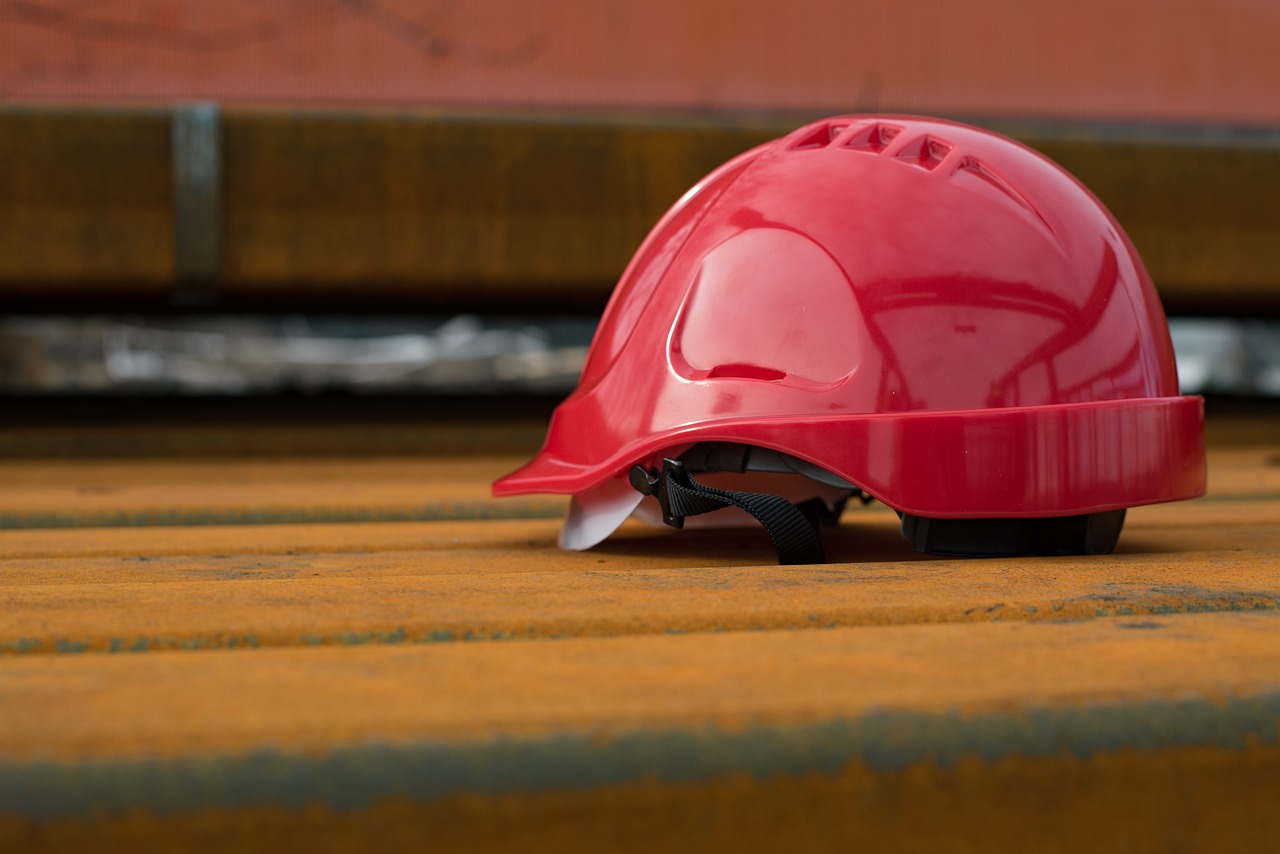
Emergency Contacts and Resources
When it comes to fire safety, having a plan in place is crucial, and that includes keeping a list of emergency contacts and resources readily available. Imagine a situation where every second counts; knowing who to call can make all the difference. It's not just about dialing 911; you should also have local fire department information, poison control, and even nearby friends or family who could assist in an emergency. A well-organized contact list can be a lifesaver, quite literally!
Start by writing down the essential numbers you might need in a fire emergency. This list can be placed on your refrigerator, near your phone, or any other prominent location in your home. Here’s a quick table to help you organize your emergency contacts:
| Contact Type | Name | Phone Number |
|---|---|---|
| Local Fire Department | Your Local Fire Station | (555) 123-4567 |
| Emergency Services | 911 | N/A |
| Poison Control | National Poison Control Center | (800) 222-1222 |
| Family Contact | Your Emergency Contact | (555) 765-4321 |
In addition to emergency numbers, familiarize yourself with community resources that can help you stay informed about fire safety. Many local organizations offer programs, workshops, and materials that can enhance your knowledge and preparedness. This includes:
- Community fire safety education programs
- Local fire department open houses
- Fire safety pamphlets and brochures available at community centers
Being aware of these resources not only empowers you but also strengthens your community's overall safety. Don't forget to check in with your local fire department; they often have valuable information and can provide tips tailored to your specific area. Remember, being proactive is the key to effective fire safety!
In summary, having a comprehensive list of emergency contacts and being aware of community resources can significantly improve your preparedness for fire emergencies. Keep this information accessible, and make sure everyone in your household knows where to find it. By doing so, you're taking a crucial step toward protecting your loved ones and ensuring that you can respond swiftly and effectively in case of a fire.
Q: What should I do if there's a fire in my home?
A: If you encounter a fire, the first step is to remain calm. Evacuate your home immediately and call 911 from a safe location. Never try to fight a large fire on your own.
Q: How often should I check my smoke alarms?
A: It's recommended to test your smoke alarms at least once a month and replace the batteries at least once a year. Additionally, replace smoke alarms every 10 years.
Q: What are the best fire safety resources in my community?
A: Check with your local fire department for community programs and resources. They often provide educational materials, workshops, and safety demonstrations.
Q: How can I create an effective fire escape plan?
A: Identify all possible exits in your home, designate a meeting point outside, and practice your escape plan regularly with your family to ensure everyone knows what to do in case of an emergency.
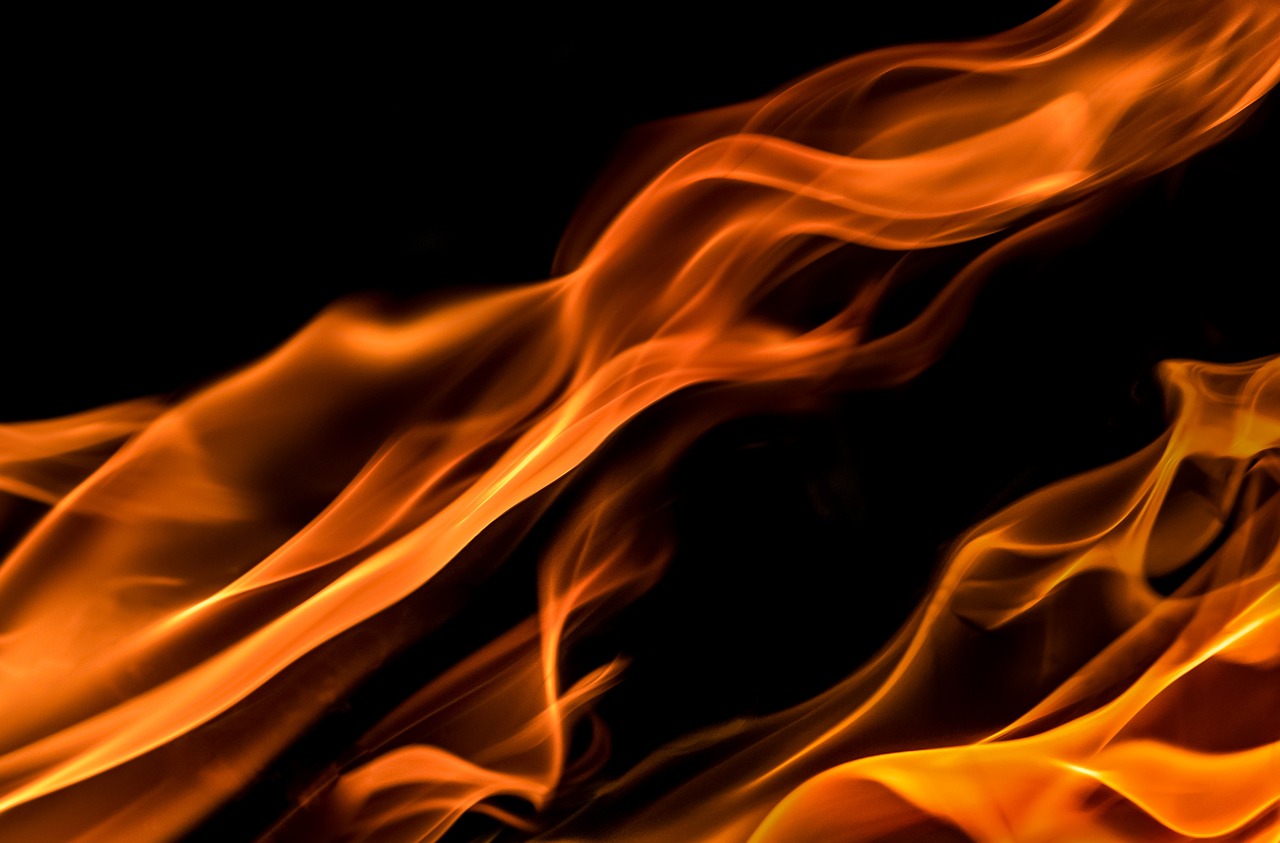
Local Fire Department Information
Understanding your local fire department's contact information is essential for every homeowner. In times of crisis, knowing who to call can make a significant difference in response time and ultimately, safety. It’s not just about having a number saved in your phone; it’s about being prepared and informed. Fire departments are not only there to respond to emergencies but also to provide valuable resources and education on fire safety.
Each community has its own fire department, and they can vary in size and capabilities. Some may have specialized units for hazardous materials, while others focus on community education and outreach. Therefore, it’s crucial to familiarize yourself with the services offered by your local fire department. Generally, you can find information about:
- Emergency contact numbers
- Fire prevention programs
- Community education sessions
- Fire safety resources for families
Moreover, many fire departments maintain a website or social media presence where they post updates, safety tips, and information about upcoming community events. Taking the time to visit these platforms can provide you with insights into fire safety initiatives and how you can get involved. You might even find local fire safety workshops that can empower you and your family with knowledge to prevent fires and respond effectively in emergencies.
In addition to knowing how to contact your local fire department, consider attending community meetings or events hosted by them. This can be a great way to meet your local firefighters and learn more about their role in your community. Engaging with them can also lead to better understanding and trust, making it easier for you to reach out when needed.
Lastly, ensure that your children know how to contact the fire department in case of an emergency. Teaching them how to dial 911 and what information to provide can be a lifesaver. Fire safety education should start at a young age, and what better way to instill that than by familiarizing them with the heroes who keep our communities safe?
In summary, having a solid grasp of your local fire department's information is not just useful; it’s an essential part of being a responsible homeowner. Stay informed, stay safe, and don’t hesitate to reach out to your local fire department for any questions or concerns regarding fire safety.
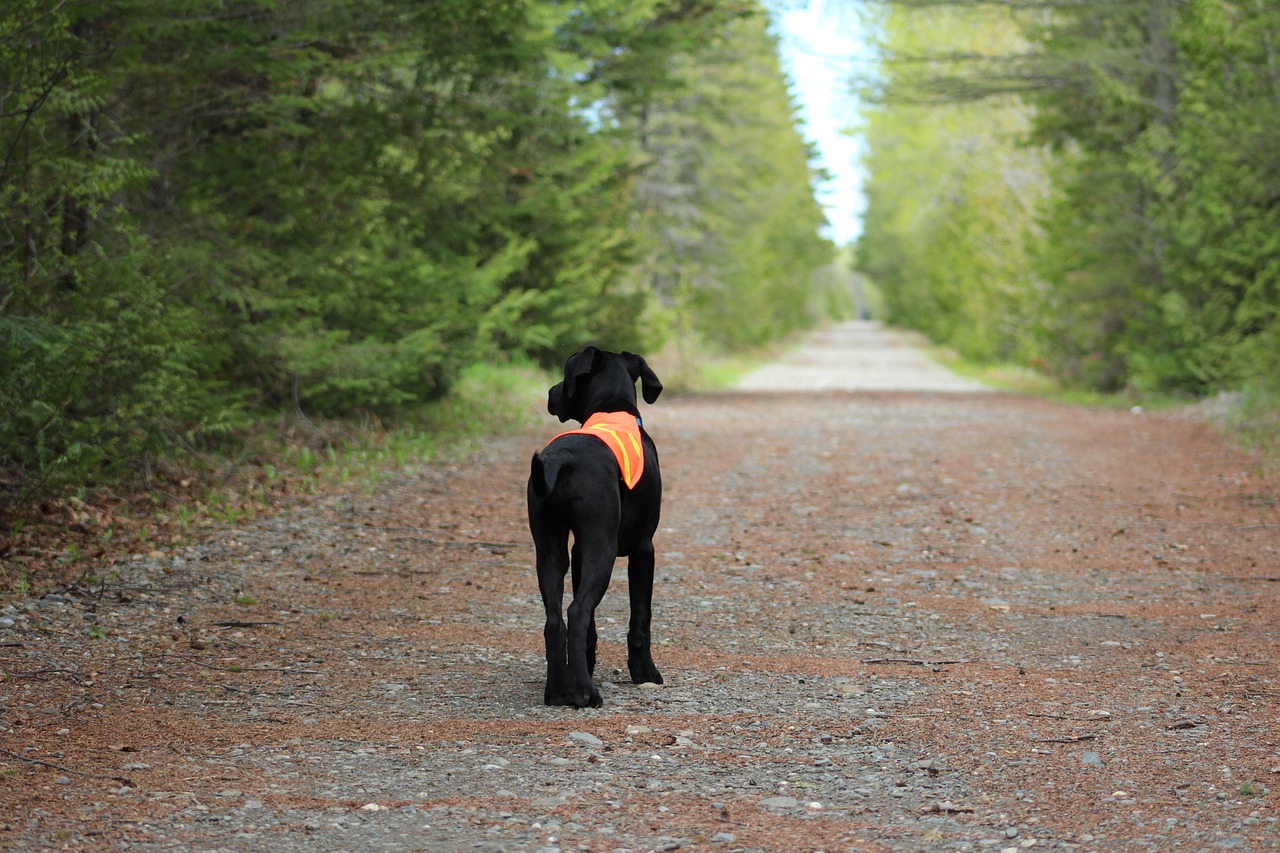
Community Fire Safety Resources
In today's world, fire safety is not just a personal responsibility; it extends to the community level as well. Many local organizations and fire departments offer invaluable resources to enhance fire safety awareness and education among residents. These resources can be a game-changer in preventing fires and ensuring that everyone knows how to respond effectively in case of an emergency. Community fire safety programs often include educational workshops, free smoke alarm installations, and access to fire safety materials that can help families prepare for potential fire hazards.
One of the key resources available in many communities is the local fire department. They often host open houses, where families can tour the fire station, meet firefighters, and learn about fire safety practices in a fun and engaging environment. These events not only provide valuable information but also foster relationships between the community and its firefighters, which can be crucial during emergencies. Additionally, many fire departments offer training sessions on how to use fire extinguishers, conduct fire drills, and create an effective fire escape plan.
Moreover, community centers and schools frequently collaborate with fire departments to promote fire safety education. They may organize programs that teach children about fire prevention through interactive activities and demonstrations. For instance, children can learn about the importance of smoke alarms and how to stop, drop, and roll in case of a fire. These early lessons can instill lifelong fire safety habits.
Another excellent resource is local non-profits and organizations dedicated to disaster preparedness. These groups often provide free materials such as brochures, flyers, and checklists that outline essential fire safety tips and emergency procedures. They may also host workshops that cover various topics, including how to create a family emergency plan and how to maintain fire safety equipment at home.
In addition to educational resources, many communities have established networks for sharing information about fire safety. These networks can include social media groups, newsletters, and community bulletin boards that keep residents informed about upcoming fire safety events, new regulations, and available resources. Staying connected through these platforms can enhance community awareness and preparedness.
To summarize, community fire safety resources play a vital role in ensuring that residents are well-informed and prepared to handle fire emergencies. By taking advantage of these resources, you not only protect your home and loved ones but also contribute to a safer community overall. Remember, fire safety is a shared responsibility, and together, we can make a significant difference.
Q1: What should I do if I notice a fire hazard in my home?
A1: If you notice a fire hazard, such as faulty wiring or flammable materials stored improperly, address it immediately. For electrical issues, consider contacting a licensed electrician. Always prioritize safety and do not hesitate to report hazards to your local fire department.
Q2: How often should I check my smoke alarms?
A2: It's recommended to test your smoke alarms at least once a month. Additionally, replace the batteries at least once a year and replace the entire unit every ten years.
Q3: Are fire drills really necessary?
A3: Yes! Conducting regular fire drills ensures that everyone in your household knows what to do in case of an emergency. Practicing escape routes and procedures can save lives.
Q4: Where can I find fire safety resources in my community?
A4: Check with your local fire department, community centers, and non-profit organizations. They often provide educational materials, workshops, and events focused on fire safety.
Frequently Asked Questions
- What are the most common causes of home fires?
Home fires can start from various sources, but the most common include cooking accidents, electrical malfunctions, heating equipment, and careless smoking. Understanding these risks helps in taking preventive measures to protect your home.
- How can I prevent kitchen fires?
To prevent kitchen fires, always stay in the kitchen while cooking, keep flammable items away from heat sources, and ensure that your cooking appliances are in good working condition. Additionally, never leave the kitchen unattended, especially when frying or grilling.
- Why are smoke alarms important?
Smoke alarms are crucial for early fire detection. They can alert you and your family to a fire, giving you precious time to escape. Regular testing and maintenance of smoke alarms ensure they function correctly when needed.
- How often should I test my smoke alarms?
It's recommended to test your smoke alarms at least once a month. Additionally, change the batteries at least once a year and replace the entire unit every 10 years to ensure optimal performance.
- What should I include in my fire escape plan?
Your fire escape plan should include designated escape routes, a meeting place outside, and a communication plan. Make sure everyone in your household knows the plan and practices it regularly.
- How do I use a fire extinguisher?
To use a fire extinguisher, remember the acronym PASS: Pull the pin, Aim the nozzle at the base of the fire, Squeeze the handle, and Sweep from side to side. Always ensure you have a clear escape route before attempting to extinguish a fire.
- What types of fire extinguishers should I have at home?
It's advisable to have a multi-purpose fire extinguisher (Class ABC) that can handle different types of fires, including those caused by wood, flammable liquids, and electrical equipment. Place them in easily accessible locations throughout your home.
- How can I find my local fire department's contact information?
You can typically find your local fire department's contact information on your city or county's official website. It's important to have this information readily available in case of an emergency.
- Are there community resources for fire safety education?
Many communities offer fire safety resources such as workshops, free smoke alarm installations, and educational materials. Check with your local fire department or community center for available programs that can help enhance your fire safety knowledge.

